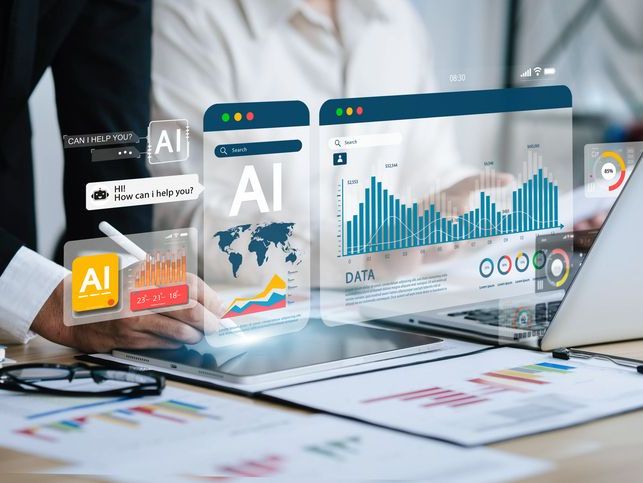Originally published in Forbes
For years, people analytics promised to transform how businesses manage talent, optimize performance and drive workforce efficiency. Yet adoption has lagged. In fact, according to one survey, 65% of organizations said their people analytics created no commercial benefit for the organization over the previous year.
The problem hasn’t been the value of workforce data itself but its lack of integration into core business operations.
Most organizations have treated people analytics as an HR tool rather than a business asset, limiting workforce data to HR systems instead of integrating it into financial and operational planning. As a result, many companies track employee sentiment and turnover trends but struggle to connect workforce efficiency, capacity and utilization to profitability and growth.
Now, as labor costs rise and economic pressures mount, companies are increasingly downsizing. To navigate these challenges, executives need clear, actionable workforce insights to drive more informed decisions. HR-driven people analytics provides only a partial (and often subjective) view of workforce dynamics.
To drive operational and financial impact, organizations need an enterprise-wide system of record grounded in objective workforce data. This enables business leaders to make more precise workforce investments and pinpoint inefficiencies with greater accuracy.
The Problem With Siloed Workforce Data
Companies rely on workforce data to guide hiring, retention and performance management, yet many critical insights remain inaccessible to business leaders outside of HR. Most CEOs and CFOs can pull up real-time financials, yet they lack immediate visibility into workforce utilization and productivity.
Without integrated workforce intelligence, leaders can’t answer key questions:
- Are we fully utilizing our workforce before adding headcount?
- Where do inefficiencies exist, and how do they impact costs?
- Which teams are stretched too thin and which have untapped capacity?
- How do work patterns affect profitability and business growth?
Labor is the largest expense for most organizations. Yet, many workforce decisions are still made using gut instinct or fragmented reports. Workforce strategy must be backed by comprehensive, integrated data that spans the business. Moving beyond traditional people analytics to a more expansive workforce intelligence solution provides that necessary system of record.
How HR’s Role In Business Strategy Is Changing
HR leaders are now expected to provide insights that guide broader business decisions. The Predictive Index found that 70% of business leaders now view HR as integral to a company’s strategic direction. Supporting this, Deloitte points to the need “to build ‘people expertise’ capability throughout the organization to provide these skills at the point of need.”
HR leaders, as the primary stewards of people analytics, must now leverage their expanded role and influence to align workforce data with business strategy. The challenge is no longer collecting the data—it’s ensuring that workforce insights are used to inform financial planning, resource allocation and operational efficiency. By integrating workforce data into broader decision-making, HR can help executives optimize labor investments, control costs and drive measurable financial impact.
In today’s economic climate, business leaders need workforce insights that:
- Identify underutilization, workload inefficiencies and lost productivity and then translate them into financial impact.
- Help prevent over-hiring, optimize staffing and align workforce costs with demand.
- Ensure employee time focuses on high-value work that drives performance and business impact.
As workforce optimization becomes a boardroom priority, HR must evolve from a data custodian to a strategic business partner, ensuring that labor investments align with business goals. Organizations that fail to do so will struggle to maintain profitability, agility and long-term competitive advantage.
Turning Workforce Data Into Business Intelligence
Where people analytics alone has fallen short, workforce data can now drive strategic value—but only when seamlessly integrated into broader business decision-making. To unlock its full potential, companies must:
- Integrate workforce data with financial and operational metrics. Workforce insights should be embedded in core business reporting systems to directly inform budgeting, forecasting and investment decisions.
- Go beyond HR-centric reporting. Traditional people analytics offers a limited view. A more advanced intelligence framework is needed that provides real-time visibility into workforce efficiency, utilization trends and cost optimization across the business.
- Translate insights into measurable business impact. Leaders need timely, actionable data on capacity and work distribution to eliminate inefficiencies, optimize staffing and make informed decisions about hiring, budgeting and resource allocation.
A New Era For Workforce Intelligence
Executives rely on real-time financials, sales forecasts and operational dashboards to guide business strategy—workforce intelligence should be no different.
To drive real business impact, companies must move beyond siloed people analytics and embed workforce intelligence into financial and operational decision-making.
Organizations that take this approach will maximize workforce investments, reduce inefficiencies and improve profitability. Those that don’t will continue making critical labor decisions in the dark.





